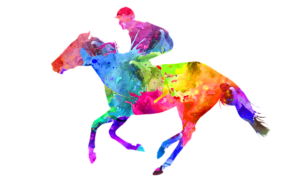Who was Alex Scott?
 The late Alexander ‘Alex’ Scott was a racehorse trainer, who was shot dead by William Clement ‘Clem’ O’Brien, a groom at the Glebe Stud in Cheveley, Newmarket, on September 30, 1994. O’Brien was already employed at Glebe Stud when Scott bought the property in 1992, but developed a ‘deep resentment’ for his new employer. Following an argument during which he told Scott he could ‘stuff his job’, O’Brien lured him to a barn, where he shot him once with a single-barreled shotgun. Scott was just 34 years old. In July, 1995, O’Brien was sentenced to life imprisonment for the murder.
The late Alexander ‘Alex’ Scott was a racehorse trainer, who was shot dead by William Clement ‘Clem’ O’Brien, a groom at the Glebe Stud in Cheveley, Newmarket, on September 30, 1994. O’Brien was already employed at Glebe Stud when Scott bought the property in 1992, but developed a ‘deep resentment’ for his new employer. Following an argument during which he told Scott he could ‘stuff his job’, O’Brien lured him to a barn, where he shot him once with a single-barreled shotgun. Scott was just 34 years old. In July, 1995, O’Brien was sentenced to life imprisonment for the murder.
Formerly a successful point-to-point jockey, Scott served as assistant trainer to Peter Calver, Harry Thomson Jones and Dick Hern before setting up on his own at Oak Stables in Newmarket in 1989. Following the retirement of Olivier Douieb, on health grounds, Scott was recruited by Maktoum al Maktoum and success soon followed. That summer, he saddled Cadeaux Genereux, owned by Maktoum al Maktoum, to win the July Cup at Newmarket and the Nunthorpe Stakes at York.
In 1991, Scott hit the headlines again by saddling Sheikh Albadou to win the Breeders’ Cup Sprint at Churchill Downs, Kentucky. At the time of his death, Scott also had Lammtarra, who was, at the time, a promising, once-raced two-year-old, in his care. Of course, Lammtarra went on to win the Derby, King George and Queen Elizabeth Stakes and Prix de l’Arc de Triomphe to finish his career unbeaten. All told, Scott trained 164 winners.
 Otherwise known as ‘vigorish’ – an Americanisation of the Russian word ‘vyigryshi’, meaning ‘winnings’ – ‘overround’ is the profit margin that bookmakers factor into a betting market, such that they make money regardless of the outcome. In a ‘fair’ market, the odds for each outcome, once converted to implied probability, should add up to 100%. In a simple coin toss, for example, the odds against tossing heads are 1/1 or ‘even money, which converts to an implied probability of (1/ (1+1))*100 = 50%; the same is true for the odds against tails, so it’s easy to see that 50% + 50% = 100%. However, to guarantee a profit, bookmakers offer odds that are shorter than they should be in a fair market.
Otherwise known as ‘vigorish’ – an Americanisation of the Russian word ‘vyigryshi’, meaning ‘winnings’ – ‘overround’ is the profit margin that bookmakers factor into a betting market, such that they make money regardless of the outcome. In a ‘fair’ market, the odds for each outcome, once converted to implied probability, should add up to 100%. In a simple coin toss, for example, the odds against tossing heads are 1/1 or ‘even money, which converts to an implied probability of (1/ (1+1))*100 = 50%; the same is true for the odds against tails, so it’s easy to see that 50% + 50% = 100%. However, to guarantee a profit, bookmakers offer odds that are shorter than they should be in a fair market.